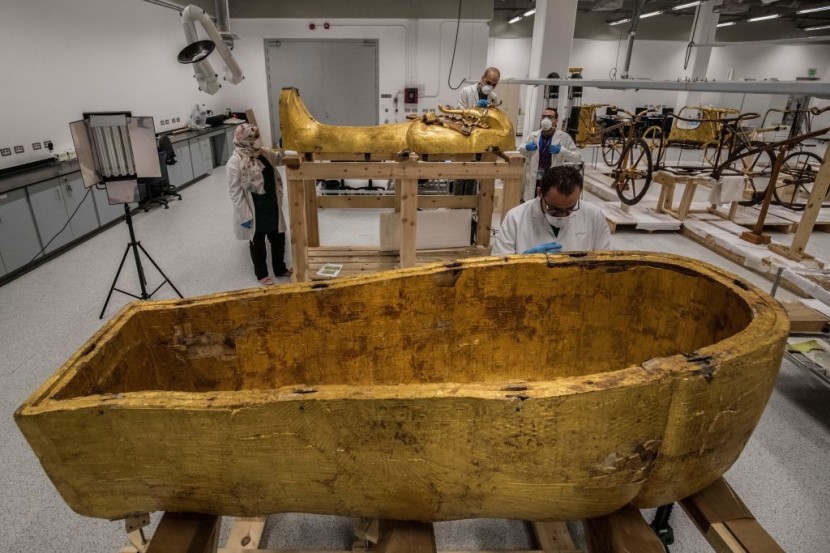
King Tutankhamun's dagger has been the object of intense curiosity about it, and archeologists allegedly discovered its secret.
Tutankhamun, known as the boy king, had the knife discovered in his tomb, which is 3,400 years old. Compared to other Egyptian pharaohs, he has been the focus of modern interest that has spawned the interest in the blade he kept when alive, and it followed him to the grave.
King Tutankhamun's Dagger Origins
Recent investigation about the dagger kept in the boy king's tomb was found in 1922. The results indicate it's not of terrestrial origin but from a meteorite far from Egypt, The Sun reported.
This new information verifies a theory suggested earlier that was imported, and his grandfather gave it as a gift. How the weapon and artifact came to be made is considered a great mystery surrounding the items given to him to be used in the afterlife.
When Tutankhamun's tomb was opened, there were many objects, but the dagger was one of the most noticed. One observation about the knife is the metal used would not be used in Egypt for half a millennium. Iron was not usual as material to forge any bladed weapon during that period.
Scientists Studies the Bladed Weapon
In 2016, scientists analyzed the archaic blade based on its chemical composition. It measures about 13-inches long and is determined to come from an iron meteorite, cites News.com.au.
A new team from the Chiba Institute of Technology in Japan found out that King Tut's dagger is not made in Egypt but from abroad.
Other publications feature enigmatic star dagger and its study in Meteoritics & Planetary Science, a scientific journal. X-rays were used to check the dagger to see the blade, and it is kept in the Egyptian Museum of Cairo.
Analysis of the structure reveals the golden hilt was made with an adhesive material used by the ancient Egyptians called lime plaster until later. The material used for the hilt was not commonly used in Egypt but much later, although other parts of the world would be artisans using the plaster.
Furthermore, the researchers had also stumbled on the temperature used to forge the Pharaoh's blade, which would be about less than 1,742 F of applied heat. The probable origin based on the findings might be from Mitanni, Anatolia.
An inference would follow the ancient record at that time, mentioning an iron dagger with a gold hilt was given by the king of Mitanni to Amenhotep III, Tutankhamun's grandfather, which turned out to have been a family heirloom.
Dating the ancient dagger from the 14th century BC, it was retrieved in the wrapping of the Pharaoh's right thigh. The handle is made of gold with a rock crystal knob.
The sheath covering has designs that feature lilies, feathers, and an Anubis or jackal's head. One more golden blade was found on the abdomen of the mummy wrapping.
Egyptians' prized objects made of rare iron were considered more expensive than gold in the Bronze age. High heat forging was not accessible until later in Egyptian history, and an equivalent was not found.
King Tutankhamun's dagger comes from a meteorite that was not disturbed for 3,300 years, adding to the stories of the most well know Pharoah of all time.
Related Article : Pharaoh Amenhotep's Mummy To Be Unwrapped After 3000-years Using Modern Tools for the First Time in Centuries
© 2025 HNGN, All rights reserved. Do not reproduce without permission.








